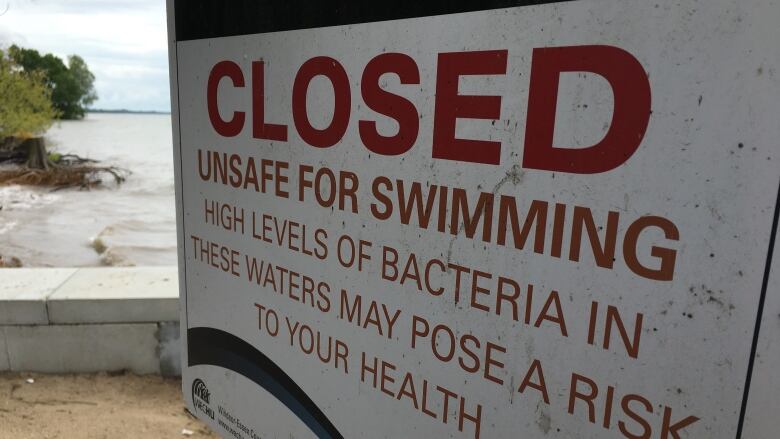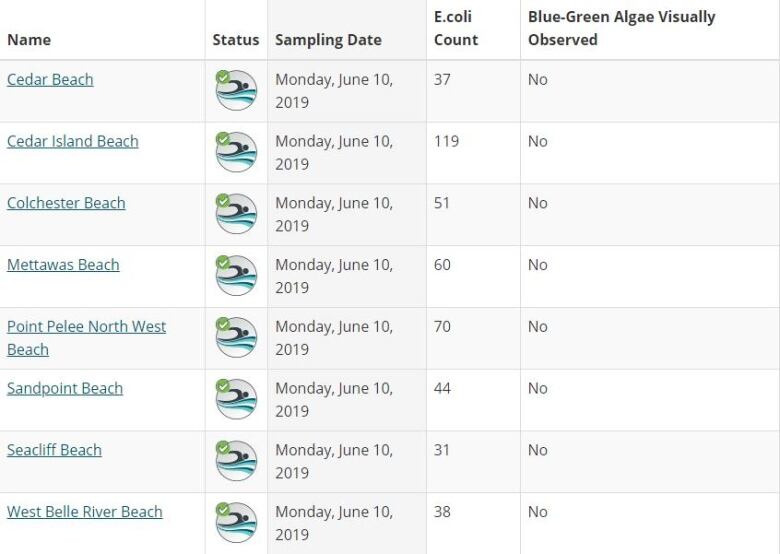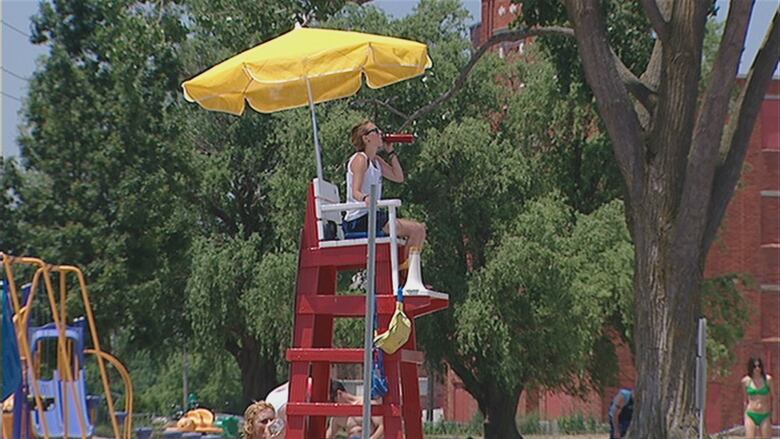Few beach closures due to bacteria levels but what does that mean?
The bacteria count threshold to warn about or close a beach changed in 2018

The Windsor Essex County Health Unit has begun its annual monitoring of water quality at area beaches.
In the first reading, sampled June 10, no area beaches are closed because of water quality.
Public health units use a national guideline of 200 E. colimeasured per 100 millilitres of water a threshold adopted in early 2018. The threshold was previously at 100 E. coli per 100 millilitres of water.
Mark Mattson, president of Swim Drink Fish Canada said he was happy with the previous threshold.
"Canada had a standard of 200 but Ontario always used 100," said Mattson, adding that the threshold changed with no notice. In the U.S. the threshold is about 128 around the Great Lakes.
Guidelines assess risk
The levels are risk assessments, judging how many people out of 100,000 will get sick due to bacteria levels in the water.
"A study in the 80s, it says for every 100,000 swimmers if E. coli levels are at 100, 700 will get sick," said Mattson."If it's at 200, 1000 will get sick."
Mattson said that number of people potentially ill is "every swim," which is why the numbers concern the organization.
"We think stricter guidelines are the better one," said Mattson. "You're going to see a lot of beaches that seem cleaner this year than they were in the previous years, not because they cleaned up the water but because they changed the standard."

According to Ministry of Health and Long-Term Care spokesperson David Jenson, the national guideline is based on the "consensus of experts across Canada and is endorsed by Health Canada."
"Previously, some public health units were using the national guideline while others were using [the 100 threshold] leading to inconsistent approaches," said Jenson.
Health risks the same at multiple thresholds
Public health units in each area are responsible for monitoring water quality at public beaches. According to Jenson, this includes an "initial environmental assessment" prior to the swim season.
WECHU conducts beach water quality monitoring at nine public beaches once a week from June to September. Sampling takes place on Monday and are updated online Wednesday. If the beach is closed due to high E. coli levels, the beach will be resampled on Thursday of the same week and results will be available Friday.

Victoria Peczulis, environmental health coordinator with WECHU,said the same health risks apply for a 100 level and a 200 level of E. coli count.
"You would have the regular concerns of gastrointestinal illness, diarrhea, eye infections, nose infections," said Peczulis. "The higher level would just prompt that there is more bacteria."
Public health inspectors go on-site to test the water and take a number of things into consideration.
"If there was recent rainfall or high winds that could stir up bacteria from the sand or shoreline," said Peczulis, adding that when people go to the beach to swim, they should be aware of recent conditions.
"We encourage the public take that into consideration when they go to the beaches," said Peczulis.

Mattson wouldn't personally go swimming in water with a 100 E. coli level, even though the standard says that's safe.
"I think it's an indicator that there's a problem in the water and you should take precautions," said Mattson, adding that the change was done to show that 20 to 30 per cent of the beaches closed in the past were because of levels in the 100-range.
"When it's high that means there's a lot of other things in the water as well," said Mattson. Health units don't test for all kinds of bacteria they use E. coli as an indicator for other bacterias as well.
A map and updated list of beach statuses is available on the health unit's website.












_(720p).jpg)


 OFFICIAL HD MUSIC VIDEO.jpg)
.jpg)



























































































